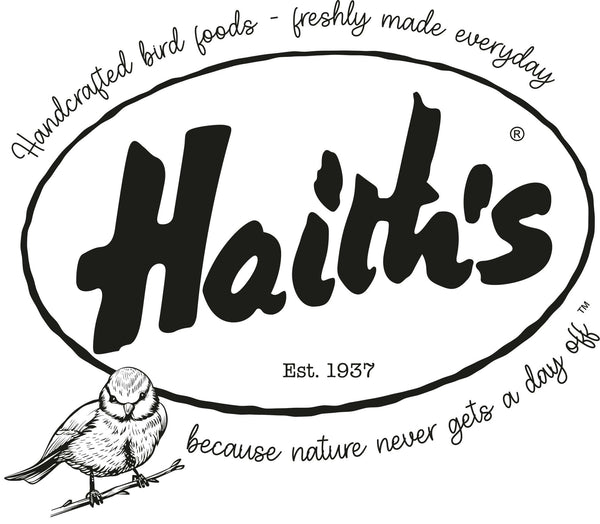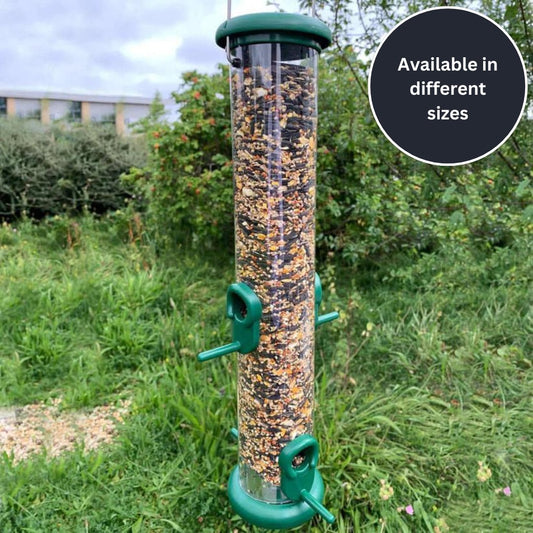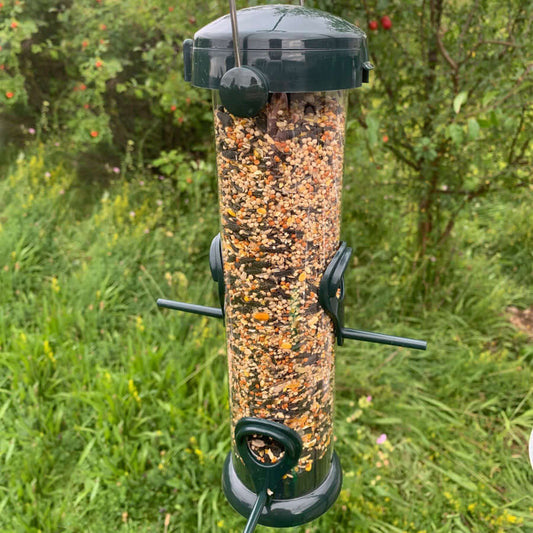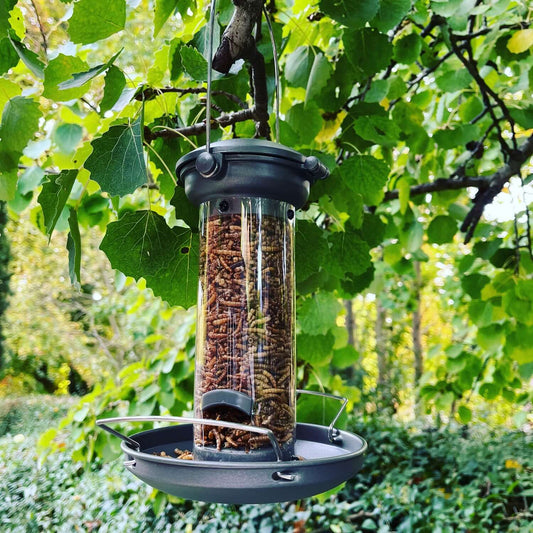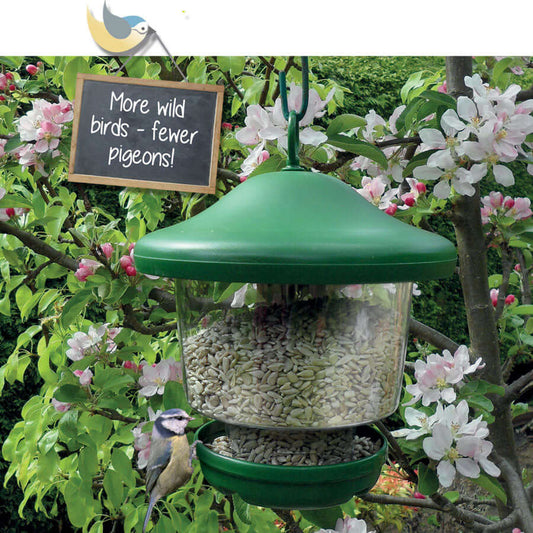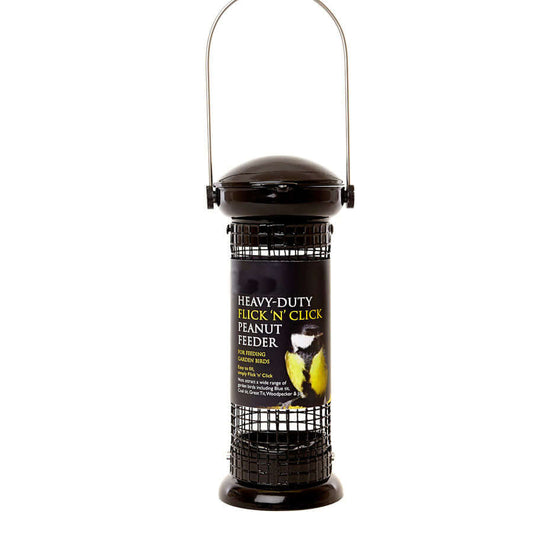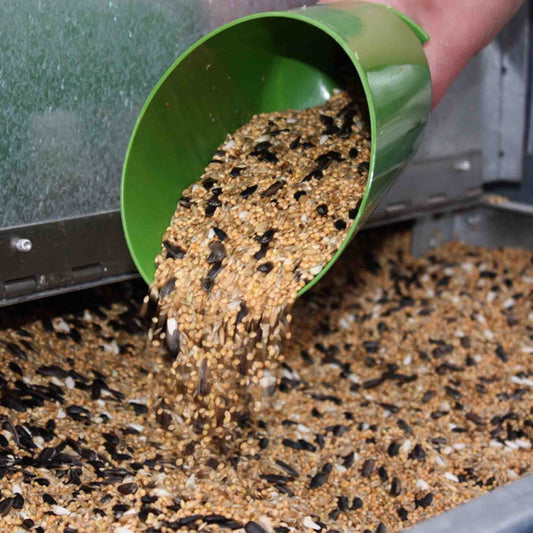Bird Feeder Guide
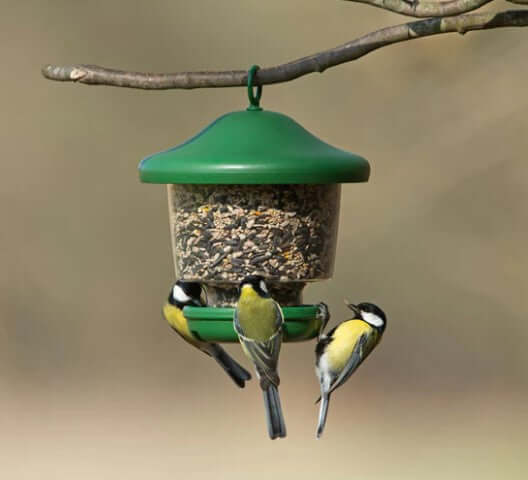
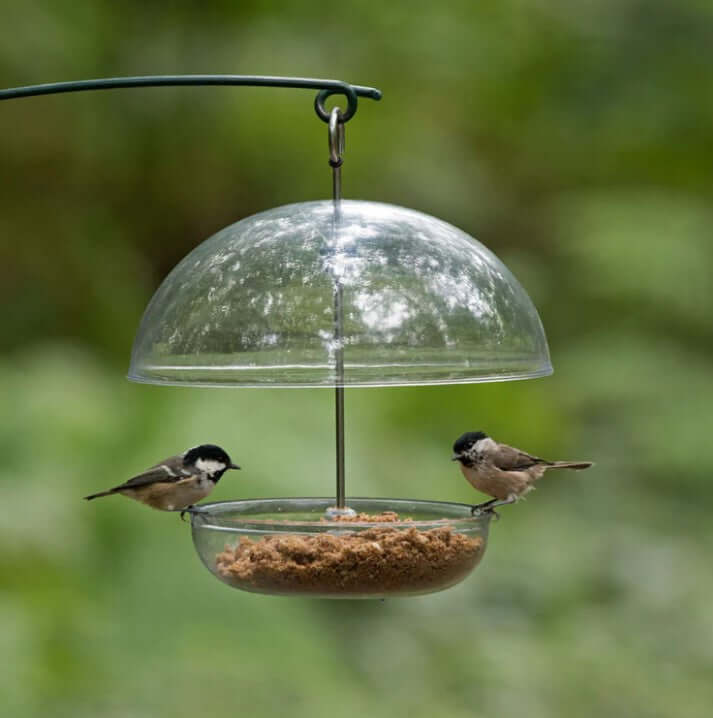
Creating a welcoming bird friendly garden begins with choosing the right bird feeder. Selecting the appropriate feeder not only attracts a diverse array of birds but also ensures the food remains fresh and easily accessible to our feathered friends. This guide will help you get started on the path to transforming your garden into a haven for birds.
For more options, check out our full range of bird feeders to attract a variety of birds to your garden.
Bird Seed Feeder
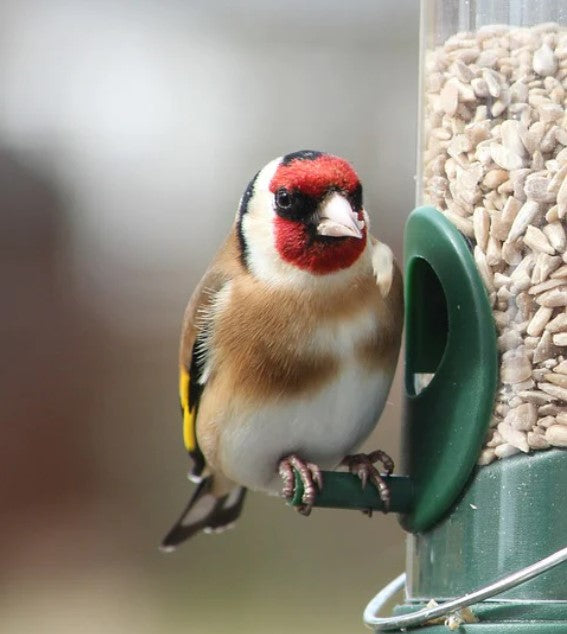
This type of feeder is suitable for sunflower seeds, sunflower hearts and seed mixes - excluding soft foods (see below for these).
In the Haith’s range we offer sizes from two to six ports. It really is better to go for a larger bird seed feeder so that more birds can get on it - particularly important for
birds that prefer to feed in flocks.
Peanut Feeder
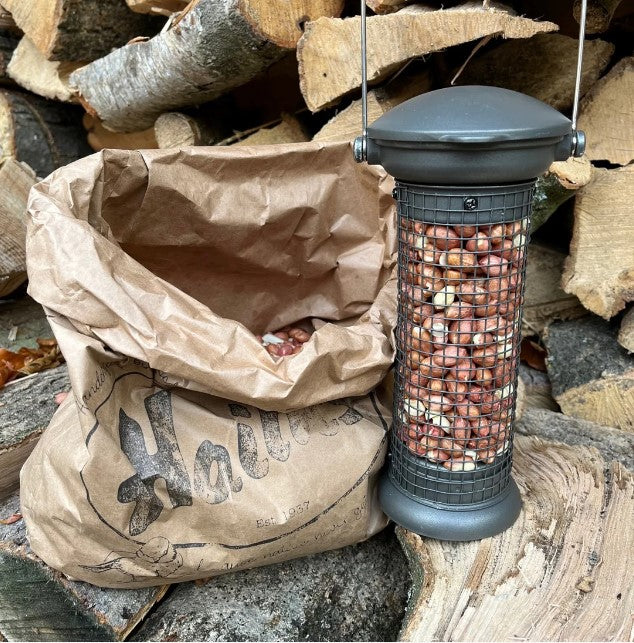
A mesh design should always be used to feed peanuts.
The relatively large size of a whole peanut is difficult for many species to eat and there's also the danger of young birds choking on the nut. So pecking at them through the mesh is much better.
Haith’s high-quality metal peanut feeders are great as squirrels (who love peanuts) aren't able to chew through to get to the nuts inside.
Niger Seed Feeders
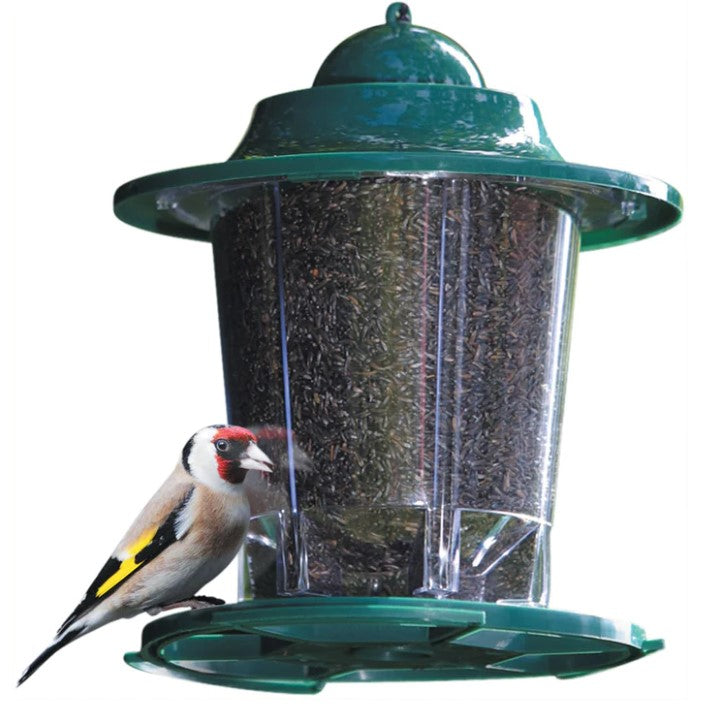
Especially designed for tiny Niger seeds.
These feeders work in the same way as our normal seed feeders but the ports are smaller to make sure tiny seeds don't pour out.
Goldfinches will be the main species to use this type of feeder, but Siskins will also be attracted as they too have a relatively pointed bill that enables them to get at the tiny seeds.
Suet Feeder
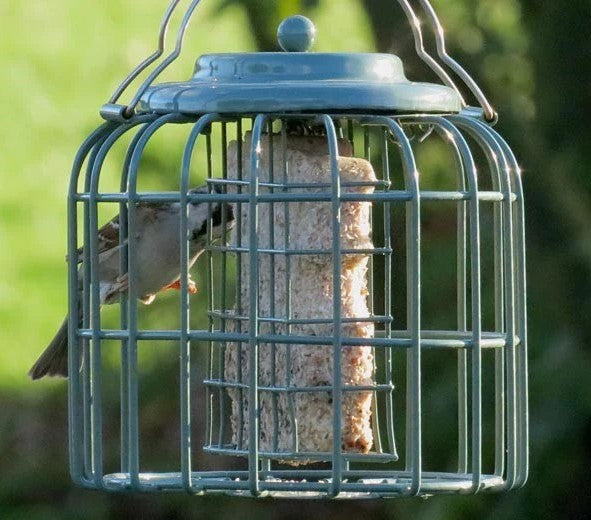
Haith’s premium-quality suet provides flexible energy-rich fats and carbohydrates. It is flexible, as it can be fed in many different ways, for example: placing suet pellets on trees can encourage birds to forage and promotes normal behaviour. The most popular feeding format, though, is via suet feeders such as the one on the right.
Soft Food Feeders and
Live Food Feeders
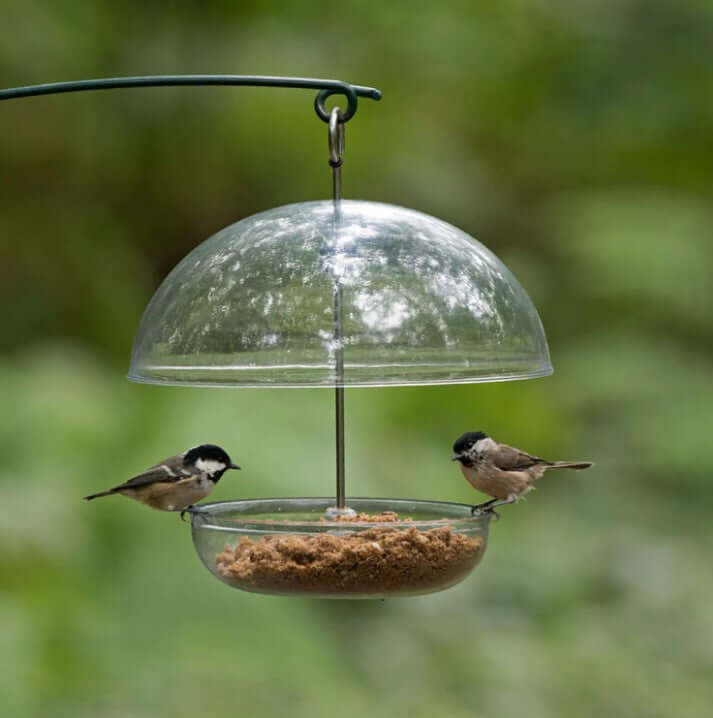
Designed for soft foods and live foods, such as: Mealworm Crumble; Golden Chorus and Prosecto Insectivorous - but also ideal for Dried Mealworms and seed mixes.
Soft foods really need to be kept dry as they'll turn into a bit of sludge if they get wet, so the 'roof' on this type of feeder will keep the rain off.
Bird Tables and Ground Feeders

Birds like the Dunnock, Song Thrush and Blackbird won't use bird feeders - they're just not
adapted to feed in this way. They prefer to feed from a bird table or simply from the ground. You can feed most of Haith’s range from a bird table or the ground, but those that leave less waste are the best. Why not try Huskfree Advance or Premium Wild Bird Food?
Feeding Stations
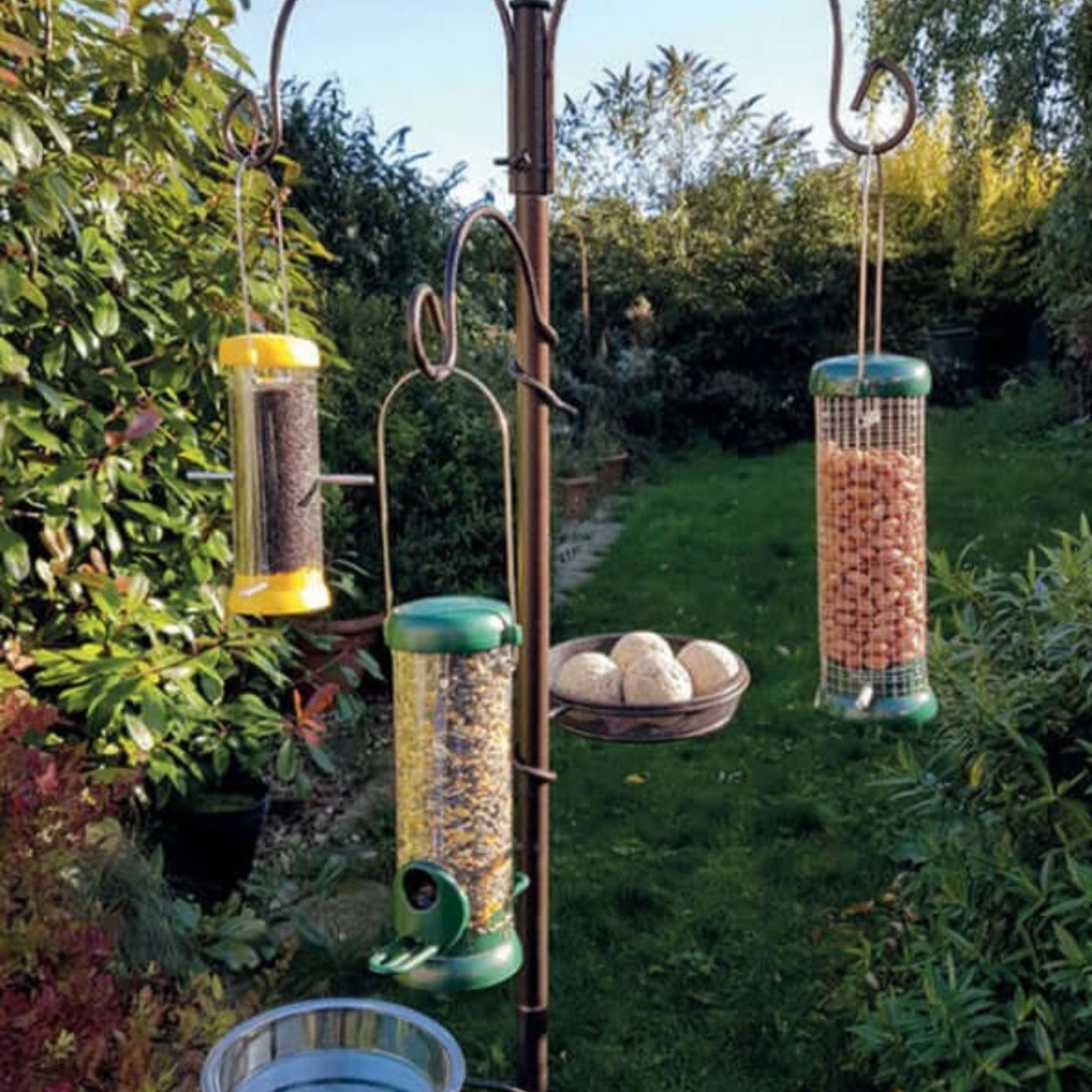
There comes a time in
every garden birder’s life when they need more room to hang bird feeders. Whilst some gardens are blessed with mature trees, others are not - feeding stations resolve this issue.
A well-positioned feeding station with lots of different feeders and trays may attract lots of different bird species due to the fact that it’s providing food at different
levels.
Accessories
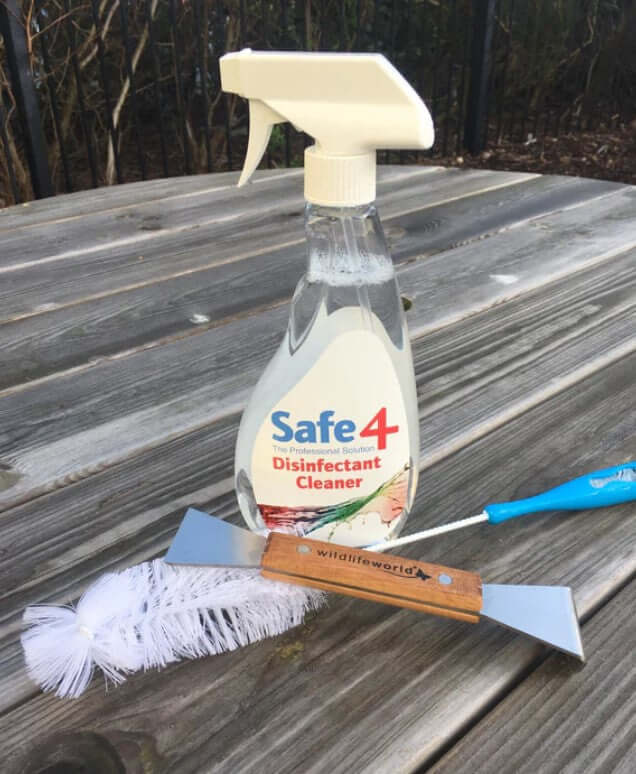
Experiment and find out what works best for your garden birds by attaching
high-quality accessories.
Food trays stop husks from gathering beneath feeders and provide extra perching
space. Cleaning brushes are designed with soft bristles so as not to scratch
and degrade UV Polycarbonate bird seed feeders.
Explore Our Bird Feeders
-
Ring-Pull Seed Feeder
Regular price From £19.99 GBPRegular priceUnit price / per -
Flick 'n' Click Seed Feeder
Regular price £8.96 GBPRegular priceUnit price / per£9.95 GBPSale price £8.96 GBPSale -
Squirrel Resistant Cage Peanut Bird Feeder
Regular price £15.96 GBPRegular priceUnit price / per£19.95 GBPSale price £15.96 GBPSale -
Pewter Flick 'n' Click Metal Mealworm Bird Feeder
Regular price £17.99 GBPRegular priceUnit price / per£17.99 GBPSale price £17.99 GBPSold out -
Squirrel Resistant Cage Bird Seed Feeder
Regular price £19.95 GBPRegular priceUnit price / per£19.95 GBPSale price £19.95 GBP -
My Favourites Bird Seed Feeder
Regular price £22.99 GBPRegular priceUnit price / per£22.99 GBPSale price £22.99 GBP -
Heavy Duty Flick 'n' Click Peanut Bird Feeder
Regular price £14.99 GBPRegular priceUnit price / per£14.99 GBPSale price £14.99 GBP -
Bird Seed Scoop - makes filling bird feeders easy
Regular price £5.99 GBPRegular priceUnit price / per
